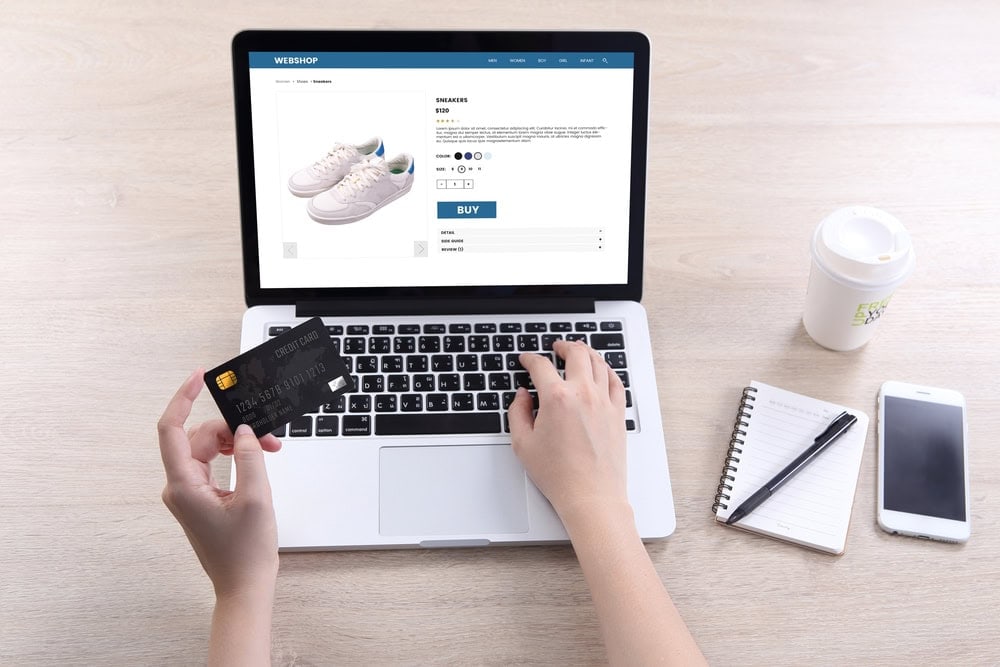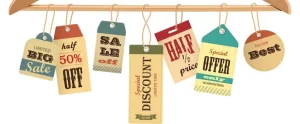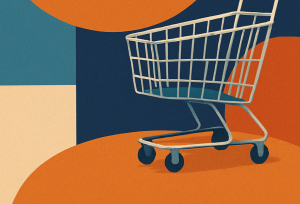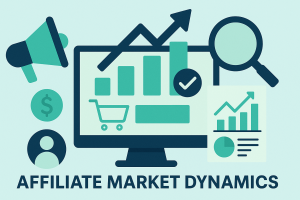
Share
Are you tired of stagnant sales on your e-commerce platform? You’re in good company—many online store owners search for the ‘secret sauce’ to growing their revenue. This guide cuts through the noise to give you 21 solid strategies for ramping up your e-commerce sales. From refining the user experience to tapping into the power of social media, we’ll provide grounded, actionable insights so you can start seeing a difference in your profit margins and learn how to increase ecommerce sales effectively.
Key Takeaways
- Optimize the user experience of your ecommerce store with improved navigation, mobile responsiveness, and fast page loading times to enhance user satisfaction and conversion rates.
- Leverage email marketing with engaging newsletters and targeted drip campaigns as well as utilize social media and retargeting strategies to maintain customer engagement and drive sales.
- Increase conversions by streamlining the checkout process, encouraging customer reviews, implementing upselling and cross-selling practices, and continually analyzing data to optimize your e-commerce platform.
Optimize Your Ecommerce Store for User Experience
Imagine walking into a store where you can’t find what you want, or even worse, can’t figure out how to navigate. Frustrating, isn’t it? Now translate that to your online store. The look, feel, and functionality of your ecommerce store can make or break your sales. In the digital marketplace where choices are abundant, a user-friendly, aesthetically pleasing, and functional site is not optional—it’s essential for ecommerce stores.
We are going to examine how optimizing site navigation, mobile-friendliness, and page loading times can augment your online store’s user experience.
Improve Site Navigation
Consider this: a customer lands on your ecommerce store, intrigued by your product offerings. But as they try to explore, they find themselves in a labyrinth of confusing menus and categories. Frustrated, they leave and you lose a potential sale. Sounds nightmarish, right? But this scenario is more common than you think.
Improving site navigation isn’t just about aesthetics. It’s about reducing friction in your customer’s journey from browsing to buying. A site that’s easy to navigate not only enhances user experience but also improves conversion rates. When designing your site navigation, consistency is key. The placement and design of key pages should be intuitive and cohesive across your site. Moreover, diversifying navigational tools such as main navigation, footer navigation, and breadcrumb navigation for product pages can significantly enhance user experience.
It’s vital that your website is easily navigable and accessible to all users, regardless of their abilities. By structuring categories comprehensively and providing a search function, you make it easier for customers to find the products they desire, thereby boosting your ecommerce sales.
Ensure Mobile-Friendliness
In today’s fast-paced world, more and more people are shopping on the go. The convenience of browsing and buying products from a mobile device has resulted in a steady surge of mobile shoppers. Mobile devices account for 38% of ecommerce sales in the US, including online sales. This shows a significant shift in consumer behavior towards mobile shopping. Hence, it’s imperative that your ecommerce store is responsive to mobile devices. Ensuring that your site navigation is mobile-friendly can significantly enhance user experience and increase conversions.
Fortunately, many ecommerce stores can benefit from ecommerce platforms like Shopify, which offer tools and themes that help optimize online stores for mobile display. Ensuring mobile-friendliness not only caters to the increasing number of mobile shoppers but also fosters an environment conducive to customer retention in online stores.
Speed Up Page Loading Times
Imagine this: You’re shopping online, you’ve found the perfect product, and you’re ready to buy. But the page takes forever to load. Frustrating, right? Page loading time is a critical factor in user experience. A slow website not only frustrates users but also adversely impacts your search engine ranking.
The faster your website loads, the higher it ranks on search engines, and the lower the user frustration. Optimizing your site’s speed, especially for mobile devices, can significantly enhance page loading times. Google classifies website speed as quick for a score of 90 or higher, moderate for a score of 50 – 90, and slow for scores lower than 50.
Accelerating your page loading times can significantly increase ecommerce sales and grow ecommerce sales.
Harness the Power of Email Marketing
In the era of social media, email might seem like an old-fashioned marketing strategy. But don’t be fooled. When it comes to building customer relationships and driving repeat purchases, email marketing is a powerhouse. With targeted campaigns, engaging newsletters, and personalized content, you can nurture relationships, increase brand awareness, and drive conversions.
We will analyze specific strategies such as crafting engaging newsletters and implementing effective drip campaigns.
Create Engaging Newsletters
Newsletters are an effective way to keep your customers engaged with your brand. An interesting, curated short article or a handy tip related to your products can convert a casual browser into a loyal customer. A well-crafted newsletter is more than just a sales pitch. It’s a tool to foster customer relationships and build loyalty. It should have a concise introduction, be organized into easily digestible sections, and include a clear call to action to guide readers.
Maintaining consistency and sticking to a regular publishing schedule is fundamental to cultivate and retain a loyal audience. To improve the post-purchase experience and encourage repeat purchases, consider incorporating timely email updates and product usage tips into your newsletters. Personalizing marketing emails by including the recipient’s name, aligning messages with the buyer’s journey, and rewarding loyalty can significantly enhance the effectiveness of your newsletters.
Implement Drip Campaigns
While newsletters help you maintain a regular connection with your customers, drip campaigns allow you to:
- Send targeted emails with dynamic content uniquely crafted for each customer’s preferences
- Provide a personal touch that can be incredibly effective
- Re-engage existing customers post-purchase, who tend to spend 67% more than first-time buyers.
One of the most effective strategies in drip campaigns is sending immediate follow-up emails after cart abandonment, followed by strategic reminders. This can significantly boost conversion rates and reduce cart abandonment.
Leverage Social Media Platforms
In today’s digital era, social media has become an indispensable tool for ecommerce businesses. With billions of people using platforms like Instagram, Facebook, and Twitter, leveraging social media can significantly increase your brand awareness, drive traffic to your store, and engage with your audience.
We will examine how the strategic selection of platforms and the dissemination of compelling content can augment your ecommerce sales.
Choose the Right Platforms
Given the plethora of different social media platforms, it’s critical to select the ones that best suit your ecommerce business. Each platform has its unique features and audience demographics, and understanding these can help you effectively reach and engage with your target audience.
For example, if your ecommerce store specializes in fashion, beauty, or wellness products, Instagram could be an excellent platform for your marketing campaigns. Utilizing Instagram advertising can expose your online retail business to over 130 million users, significantly boosting your revenue.
Social media campaigns can also serve as effective top-of-funnel marketing strategies, capturing the attention of potential customers on the platforms they frequent.
Share Compelling Content
The creation and dissemination of engaging content on social media is pivotal for captivating your audience and propelling sales. For instance, incorporating ‘Shoppertainment’ such as online fashion showcases, demonstrations, or Facebook Live events can engage customers and lead to increased ecommerce sales.
Promotional content for flash sales can be effectively shared through both email marketing and social media to reach a broad audience and induce a sense of urgency to buy. Showcasing social proof through positive reviews and celebrity endorsements can significantly drive sales by instilling trust in potential customers.
Offer Attractive Promotions and Discounts
Who doesn’t love a good deal? Offering attractive promotions and discounts can entice customers to make purchases. Whether it’s a first-purchase discount, free shipping, a two-for-one sale, or a special coupon, promotions can be a powerful tool to increase your ecommerce sales.
We will examine how the creation of flash sales and offering of bundle deals can enhance your sales and profitability.
Create Flash Sales
Flash sales can be a powerful tool to boost your ecommerce sales. By offering enticing savings and setting clear time limits, flash sales create a sense of urgency and FOMO (Fear of Missing Out), leading to impulse purchases. Besides generating immediate revenue, flash sales can also help clear excess inventory, increase customer loyalty, and attract new customers.
Nonetheless, careful planning of your flash sale is crucial. Here are some key steps to consider:
- Select suitable products for your flash sale.
- Define your sale objectives – what do you want to achieve with this promotion?
- Ensure a short duration for your flash sale – this creates a sense of urgency for customers.
- Prepare your inventory and shipping logistics to handle the increased demand.
- Beware of running flash sales too frequently – doing so risks causing ‘flash sale fatigue’ among customers, reducing the effectiveness of your promotions.
Offer Bundle Deals
Another effective strategy to increase your ecommerce sales is offering bundle deals. Product bundling involves selling a set of complementary items together, increasing the overall value of the purchase. For instance, if a customer is interested in a camera, offering a bundle deal that includes a camera bag, memory card, and lens cleaner can encourage them to spend more. Bundle pricing can be presented as a discount on the total price or with an added value, such as a ‘free’ item included in the purchase.
Offering customers the option to build their own bundles from a curated selection of items can also lead to an increase in the average order value.
Implement Retargeting Strategies
Have you ever visited a website, viewed a product, and then seen ads for that product on other websites you visit? That’s retargeting in action. Retargeting is a powerful marketing strategy that targets users who are already familiar with your site and have shown interest in your products. Most visitors do not convert on their first visit, and retargeting provides multiple opportunities to bring them back to your site to complete a purchase.
We will investigate how to establish retargeting ads on social media and employ email retargeting to re-engage visitors who have exited your site without making a purchase.
Set Up Retargeting Ads on Social Media
Retargeting ads on social media platforms can be a powerful tool to re-engage users who have shown interest in your products. These ads are displayed to users who have visited your site but left without making a purchase. Retargeting campaigns track these users using pixels or cookies and display targeted ads across various platforms, including social media.
To set up a Facebook retargeting campaign, for instance, you can create a custom audience in Facebook Ad Manager using website traffic data and consider using Instagram as an additional placement. Focusing your retargeting efforts on users who added items to their cart but did not complete a purchase can lead to more effective campaigns.
A successful retargeting campaign can substantially raise conversion rates, with potential increases of up to 26% for cart abandoners.
Utilize Email Retargeting
While retargeting ads on social media can reach a wide audience, email retargeting can provide a more personalized touch. Utilizing email retargeting can be especially effective for re-engaging customers who have abandoned items in their cart. Sending a follow-up email shortly after a customer abandons their cart can remind them of their interest and persuade them to complete the purchase.
To increase the chances of customers completing a purchase, consider offering a reward such as a coupon code for their next purchase.
Enhance Product Listings
A picture is worth a thousand words, and in the world of ecommerce, it can be worth thousands in sales. The way you present your products on your site plays a crucial role in influencing purchasing decisions. Comprehensive and compelling product descriptions, high-quality images, and authentic customer reviews can significantly boost your ecommerce sales.
We will examine how writing compelling product descriptions and displaying high-quality images can enhance your product listings.
Write Compelling Product Descriptions
A product description is more than just a list of features. It’s a chance to sell your product to the customer, to convince them that this is the product they’ve been looking for. A well-written product description can:
- Cater to your customer’s preferences and expectations
- Highlight the unique selling points of your product
- Create a sense of urgency or exclusivity
- Use persuasive language and storytelling techniques
- Include customer testimonials or reviews
All of these elements can make your product description irresistible to potential customers.
To write compelling product descriptions, follow these tips:
- Focus on the benefits your product offers and use positive adjectives to describe it.
- Employ storytelling to engage emotions and create a connection with the customer.
- Organize key points with bullet points for clarity.
- Remember, a compelling product description serves as a sales pitch, providing the necessary information to foster a connection between the customer and the product.
Showcase High-Quality Images
When shopping online, customers can’t touch or feel your products. They rely heavily on the images you provide. Therefore, high-quality product images are crucial for showcasing your products effectively. Detailed visuals, like high-quality images and 360-degree views, can help customers make confident purchasing decisions by overcoming the limitations of online shopping. Furthermore, professional product photography should ideally be used over stock photos for a more accurate representation of products.
Remember, consistency in visual presentation, such as color schemes and styles, across product pages and marketing materials, helps build brand recognition. By showcasing high-quality images, you can increase trust in your brand and boost your ecommerce sales.
Streamline the Checkout Process
The checkout process is the final hurdle before a customer completes a purchase. To streamline the checkout process and reduce cart abandonment, consider the following:
- Minimize form fields to only ask for essential information
- Integrate autocomplete features to make it easier for customers to fill out their information
- Offer guest checkout options to eliminate the need for customers to create an account
By implementing these strategies, you can create a more efficient and user-friendly checkout process.
We will investigate how offering guest checkout and accepting various payment methods can simplify your checkout process.
Offer Guest Checkout
Forcing customers to create an account before they can complete a purchase can be a deterrent. It adds an extra step to the checkout process and can lead to cart abandonment. Offering a guest checkout option early in the checkout process can prevent this from happening.
You can still encourage customers to create an account after the purchase by using the data they’ve already provided. For repeat customers who already have an account, enabling a one-click purchase experience can significantly enhance their shopping experience.
Accept Multiple Payment Methods
In today’s digital era, customers expect a variety of payment options. By accepting multiple payment methods, such as credit cards, digital wallets, and buy now pay later services, you can accommodate different customer needs and increase sales. Offering a variety of payment methods not only accommodates customer preferences but also enhances their checkout experience.
Furthermore, accepting cryptocurrencies can capture a market segment that prefers modern payment solutions and enhance your store’s image as a forward-thinking retailer. Remember, ensuring secure payment transactions through trusted payment gateways can help safeguard customer information and strengthen their trust in your online store.
Encourage Customer Reviews and Testimonials
Customer reviews and testimonials can be a powerful tool to establish trust and credibility for your ecommerce store. Online reviews have a significant impact on purchasing decisions, with 93% of users stating that they are influenced by them. This highlights the importance of online feedback in consumer decision-making. But how can you encourage your customers to leave reviews and testimonials?
We will examine how to solicit reviews after purchase and display testimonials on your site.
Request Reviews Post-Purchase
One way to encourage customer reviews is by reaching out to customers post-purchase. This can be done through a simple ‘Thank You’ email, which can include a request for a review and a discount code for their next order. Post-purchase surveys can also provide valuable insights into the customer’s shopping experience, helping you identify both strengths and weaknesses.
By communicating your commitment to improving the customer experience, you can increase the likelihood of customers participating in post-purchase surveys. The feedback obtained from these surveys can then be used to enhance the shopping experience and ultimately improve your ecommerce sales through effective customer engagement.
Showcase Testimonials on Your Site
Showcasing testimonials on your ecommerce site can serve as powerful social proof. Testimonials can help customers recognize and remember your business, even if they don’t remember its name. Displaying these testimonials prominently on your site can reinforce positive opinions about your brand and instill trust in potential customers.
Remember, prospective customers often feel reassured and are more likely to make a purchase when they see positive testimonials from other consumers, showcasing the customer value and attracting loyal customers.
Implement Upselling and Cross-Selling Techniques
Upselling and cross-selling techniques can be powerful tools to increase your ecommerce sales. Upselling involves influencing customers to purchase a higher-end product or add-on, whereas cross-selling suggests additional, complementary products. These techniques not only boost your revenue but also help build long-term customer relationships.
We will examine how suggesting related products and providing upsell opportunities can lead to more sales, augmenting your overall revenue.
Recommend Related Products
Recommending related products can significantly enhance the shopping experience for your customers. By suggesting products that complement the one they’re viewing, you can personalize the shopping experience and increase the average order value. For example, if a customer is looking at a laptop, recommending related items like a laptop bag or a wireless mouse can encourage them to spend more.
Product comparisons on your site can also help maintain user engagement and simplify the purchasing process.
Offer Upsell Opportunities
Offering upsell opportunities can be a powerful strategy to increase your ecommerce sales. By presenting customers with higher-priced alternatives or items with more features, you can influence them to spend more. For instance, if a customer is interested in a basic digital camera, showing them an upgraded version with additional features can convince them to buy the higher-end product.
Cross-selling complements the upselling strategy by suggesting additional, complementary products during the checkout process, like recommending a camera case and memory card when a customer purchases a camera.
Analyze Data and Continuously Optimize
Data is the lifeblood of ecommerce. By analyzing data, you can gain insights into your customers’ behavior, preferences, and purchasing patterns. These insights can help you make informed decisions that can boost your ecommerce sales.
We will examine how the use of analytics tools and continuous testing and iteration can optimize your ecommerce store.
Use Analytics Tools
Analytics tools like Google Analytics can provide a wealth of information about your customers. They can help you track customer behavior, understand their preferences, and gain insights into their purchasing patterns. By understanding your audience, you can tailor your marketing efforts to their needs and preferences, increasing your ecommerce sales.
Tools such as Semrush offer insights into consumer behavior, enabling you to optimize your ecommerce site for improved conversion rates. Such analytics tools can be valuable for understanding and meeting customer needs.
Test and Iterate
Testing and iteration are crucial for optimizing your ecommerce store. A/B testing, for instance, involves comparing two different elements to see which one performs better. By running multiple versions of the same page and comparing their performance, you can build towards the layout and elements that achieve maximum conversions.
Remember, to achieve consistent improvements, A/B testing should be an ongoing process that intelligently builds upon previous results, rather than a one-off solution.
Summary
In the dynamic world of ecommerce, standing still is moving backward. To stay ahead, you need to continuously innovate and adapt your strategies. The 21 proven tricks we’ve discussed in this article can help you optimize your ecommerce store, engage your audience, and ultimately boost your sales.
As you explore these effective strategies to amplify your e-commerce sales, consider how our affiliate management services can further enhance your success. By partnering with us, you gain access to expert strategies and a network designed to maximize your online revenue. Let us help you not only apply these tips but also optimize your entire sales funnel through tailored affiliate partnerships.
Remember, the key to success in ecommerce lies in understanding your customers and providing them with a seamless and enjoyable shopping experience. So, take these tips and start revolutionizing your ecommerce business today!
Frequently Asked Questions
What is the importance of site navigation in an ecommerce store?
Site navigation is crucial in an ecommerce store as it improves user experience, making it easy for customers to find products and ultimately boosting conversion rates.
How can email marketing help increase ecommerce sales?
Email marketing can help increase ecommerce sales by building customer relationships, increasing brand awareness, and driving conversions through targeted campaigns and personalized content. Start leveraging the power of email marketing to boost your online sales today!
Can social media platforms boost ecommerce sales?
Absolutely, social media platforms have the potential to increase brand awareness, drive website traffic, and engage with your audience, ultimately leading to higher ecommerce sales.
How can I prevent cart abandonment during the checkout process?
To prevent cart abandonment during the checkout process, streamline the checkout process, offer guest checkout options, and accept multiple payment methods. This will make the process easier and more convenient for your customers.
How can I use data to boost my ecommerce sales?
Analyzing data can provide insights into customer behavior, preferences, and purchasing patterns, allowing you to make informed decisions that can boost your ecommerce sales. Start leveraging your data to drive sales today!







